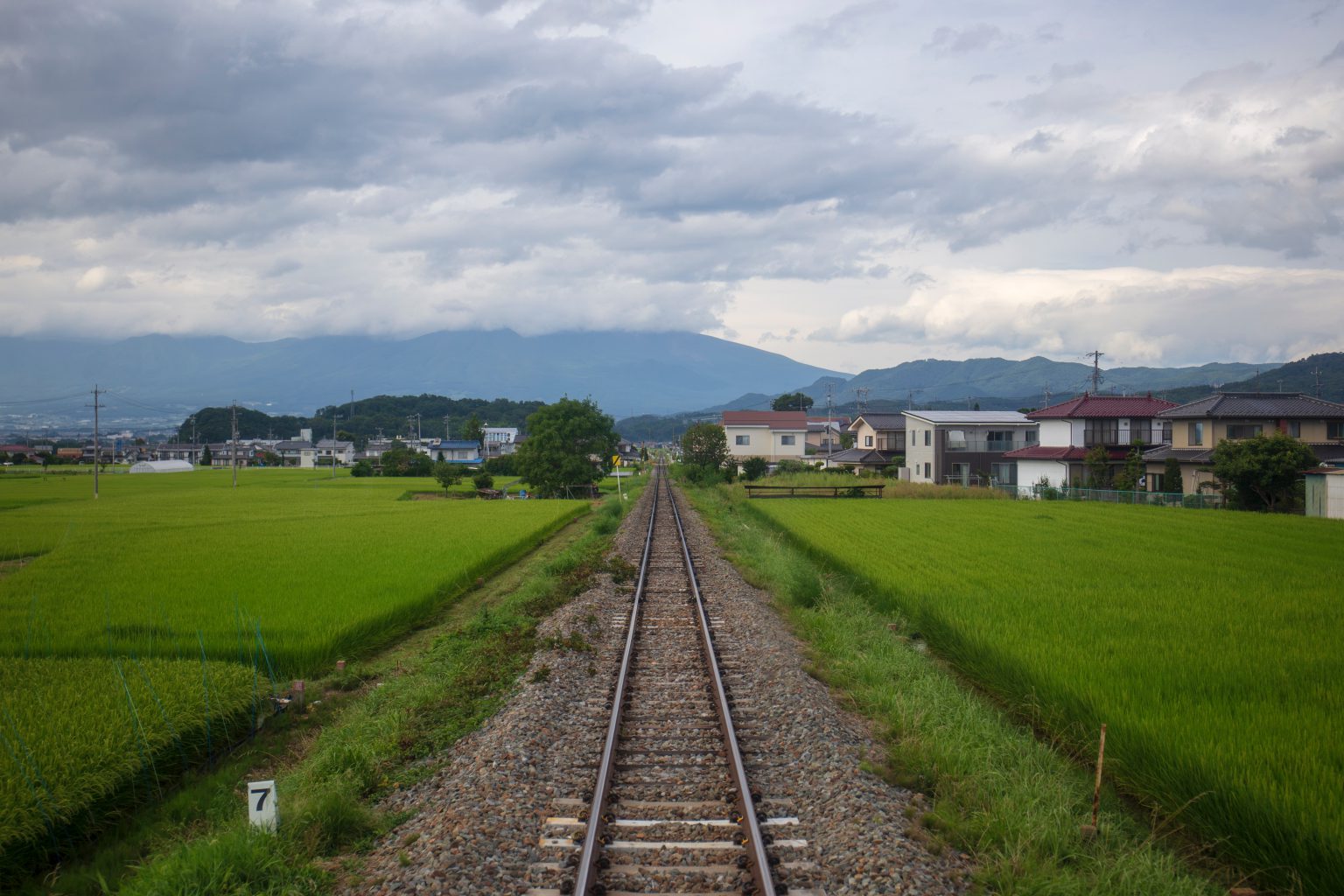Public Transport
Gunma has several public transportation options available. However, as isn’t a large metropolitan area, not all areas are serviced and many of Gunma’s residents, both foreigners and Japanese nationals, own vehicles. Those who are used to frequent city transportation, with many trains/busses per hour, may experience transportation culture shock in Gunma, where services may only run two or three times an hour in urban areas, and once every hour, or even less frequently, in rural areas.
Trains
Many parts of Gunma are serviced by public transport. JR (Japan Railways) trains connect most of Gunma’s major city areas and some of the more “inaka” areas. Shinkansen (“bullet train”) services run through parts of Gunma, including the largest city, Takasaki, offering access to Tokyo, Niigata, and Nagano, and via transfer to the rest of Japan. In the Tobu and Chubu regions, Tobu Railways offers an extensive network, including limited-express trains running to Tokyo in under two hours. Three private railways offer addition transport as well as scenic train tours.
Buses
Much of Gunma is service, in one way or another, by buses. Busses link many of the more out-of-the-way locations with larger areas and train stations, and some “inaka” areas have local bus services as well. Most cities have local bus services, and in urban areas where regular bus services isn’t practical, more creative options—such as Midori City’s Denwa de Basu (Bus by Phone), where users call a phone number and arrange pickup at a stop—have evolved.
Highway Buses
Limited-stop highway busses also run from many of Gunma’s larger cities, connecting the prefecture with Tokyo’s international airports and many cities throughout Japan, including Tokyo, Sendai, Kyoto, and Osaka. While these busses require reservation, they can be a useful and comparatively inexpensive way to travel long distances.
Personal Transport
Gunma is most certainly not famous for its public transport network, and as such, personal transport is often a necessity and, even in areas where it’s not necessary, can greatly increase one’s ability to travel freely.
Cars
Gunma has more cars per capita than most of Japan, and this applies not only to Japanese nationals but to foreigners as well. Many JETs have cars, even those who live in urban or city areas. Although owning a car in Japan—where you have to pay many man (10,000 yen) a year in insurance, inspection, taxes, and parking-space rental, etc—can be rather expensive, in Gunma in particular it offers the ability to anywhere you want, whenever you want, and is particularly useful in accessing many of Gunma’s outdoor activities.
In Japan, there are two main types of car-type vehicles—regular cars (futsuu jidousha, “white plates) and kei-cars (keijidousha, “yellow plates”). Kei-cars have the benefits of being smaller and both cheaper to buy, own, and maintain, but they also lack in acceleration, interior space, and cargo space, can run extremely slowly in steeper areas, and legally do a maximum 80kph (about 50mph) on the expressways. Regular cars have the advantage of added interior and cargo space, not being daunted by accelerating or climbing hills, and being able to do 100km (60mph) on the expressways. However, they are more expensive to purchase, insure, inspect, and often have higher tolls on tolled thoroughfares.
Motorcycles and Mopeds
Both motorcycles and mopeds offer another motorized transport option, and can be cheaper overall than kei- or regular cars in terms of purchase, maintenance, and even parking/expressway fees. Despite these advantages, they also have disadvantages. Vehicles in this category over a certain size require a special license and the size of the vehicle and engine also limits its maximum speed and whether or not it can utilize the national expressways. Also, due to the Gunma’s weather, such vehicles can be uncomfortable, impractical, or even dangerous to operate, depending on the season and conditions; however, there is definitely plenty of time to use them comfortably and safely as well, and Gunma has some great riding locations. Location, use (main form of transportation or recreation, etc), and other factors should be considered when deciding whether or not to buy a moped or motorcycle.
Bicycles
Particularly for those who live in urban areas, bikes can often be the main form of personal transportation in Japan. Bikes in Japan come in various models, from single-gear, city-style bikes (the most common) with baskets and luggage racks to mountain bikes, road bikes, and even collapsible bikes that can be easily stored in the genkan (entryway) or put into a bag to carry on a train. Most Gunma JETs who live in town have bikes, even those who own cars/mopeds/etc, and even for those in smaller towns may be able to use a bike for commuting around town. Bikes shops are extremely common and finding used city bikes isn’t difficult. Bike shops also often free basic service, such as tire inflation.
Licenses
In order to drive in Japan, you must have either (a) a valid Japanese license or (b) a valid license from your home country AND a valid International Driving Permit from your home country. An International Driver’s Permit is only valid in Japan for a period of one year from when you enter the country, regardless of whether or not the IDP expires beyond that time. After that one year period, you must have obtained a Japanese driver’s license in order to drive in Japan. Also, you must have had a license and resided in your country for at least 3 months prior to entering Japan. The Japanese police have issued a document outlining this rule. Please understand that driving with an expired or invalid IDP is considered by police to be driving without a license, and getting caught can result in steep penalties and potentially deportation.
If you come from a country—such as Australia, Canada, etc—which has a reciprocal licensing agreement with Japan, you simply must do the paperwork in order to have your license converted over. If you come from the United States or many other countries that do not have a reciprocal agreement with Japan, you must also pass the driving test course in order to receive a Japanese license–a process that can be both very difficult and very time-consuming (and yes, we’re trying to scare you).
The licensing test does not test your actual driving ability, but rather your ability to do very specific things. You typically need to attend a driving school course at least one time (at a cost of 4500 yen in Takasaki), and sometimes more, in order to know what is necessary to pass. Passing the test typically requires multiple attempts and, depending on how busy the testing center is, you may have to wait from one week up to a month or more in order to schedule a retest (after the first time you must schedule your exam). Therefore, if you will need a license for your location or job, you need to start immediately in order to guarantee that you will receive your license before your IDP expires.

